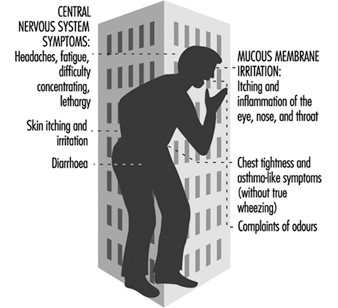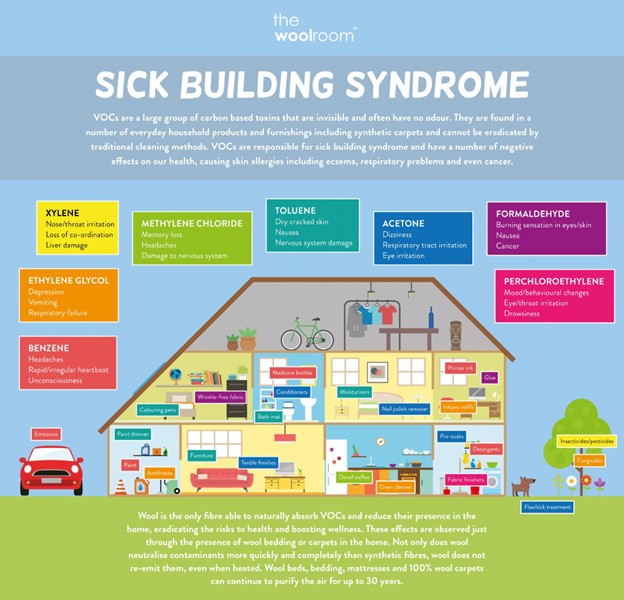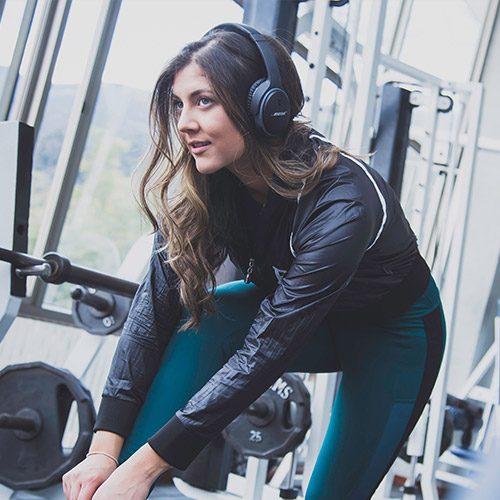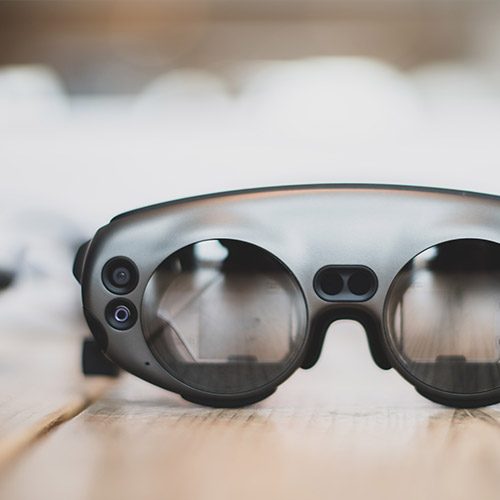SBS or Sick Building Syntome
Do you spend a vast part of your life indoors? Probably, yes. Just like millions of people around the globe. Studies show, on average, humans spend outside only 10-30% of their lives. Don’t believe it? Let’s count!
• 8 hours working day – either in the office or from home.
• 12 hours we spend at home – 8 of those we spend on sleeping, other 4 – cooking and resting.
• Children also spend up to 8 hours at school.
• Transportation – to get to school/work takes up to 2 hours daily on average.
• In addition, as users of the market economy, we spend a lot of time in shopping malls, restaurants, etc.
One of the many health hazards of our century is sick building syndrome. What’s that, and do we all have it? Most likely, yes.

(Source: https://www.iloencyclopaedia.org/part-i-47946/systematic-conditions/item/493-sick-building-syndrome)
Recently, poor air-quality consequences have become of high importance. We need air to live, literally. But what is the air that we breathe consist of? A lot of pollutants are present there. And not only outside – this is a big delusion that indoor air is cleaner and risk-free. Sometimes it is even worse. And as we all spend 80-90% of our time inside different buildings, the sick building syndrome can occur. In our own house, which we love and think of as the safest place in the world, in our modern office/school/university – the air is or can be affected by many factors and is not always taken care of.
Have you ever experienced headaches, dizziness, nausea, eye, nose, or throat irritation? Or have you ever felt sick at work, but as soon as you left the office, it became fine? You may have decided you were tired from work and needed a break. But has it ever crossed your mind that all these unpleasant feelings can be due to bad air quality? Well, this is a possible reason!
According to the National library of medicine (https://www.ncbi.nlm.nih.gov/pmc/articles/PMC2796751/#CIT2), the list of symptoms is quite long: from headaches (most common) to chest pain and asthma. Usually, we feel better as soon as we get into the fresh air. However, those symptoms might persist due to health issues depending on the individual.
The liable sources of SBS come from chemical, and biological contamination, inadequate ventilation, electromagnetic radiation, and other factors.
Chemical contaminants mostly appear indoors from outside pollution. Is your home located near a road? That’s how you get NOx, SOx, and other chemicals. You can also produce some chemicals at home with your own hands! Cleaning using some agents, for instance, is a source of harmful chemicals and VOCs – volatile organic compounds. Building materials and furnishings, such as carpets and wall paints, emit VOCs too.
Biological contaminants include pollen, viruses, bacteria, fungus, and moulds. Bio contaminants get reproduced in water accumulated in humidifiers, drainpipes, carpets, insulation layers, and ceiling tiles due to the high humidity levels. A/C can recirculate all those pathogens around. And if the office is full of people – one can easily get infected by the others. The humidity level should be monitored and kept at an optimum range of 30-60% to avoid dry skin, irritated sinuses and throat, and itchy eyes.
A problem of inadequate ventilation appeared in the 1970s when buildings were constructed more airtight to save energy. Now, by law, specific norms are implemented to reduce the risk of contamination indoors. Ventilation standards vary from country to country. In the USA, for example, the regulation specifies that outdoor air should seep into each occupied office at a minimum rate of 0.06 cubic meters per second per person. In Europe, the standard is 8 litres per second per person. When there is a lack of fresh air circulating throughout the building, pollutants become trapped indoors, increasing the SBS. Also, carbon dioxide rates rise, which can lead to headaches and dizziness.
Electromagnetic radiation is another reason for bad air quality. Every office includes different equipment, such as computers, printers, televisions, microwaves, etc. Proper grounding is required to avoid high magnetic fields, which can be associated with cancer in different studies.
We can’t omit psychological factors too. People live at work! Stress, dissatisfaction, and bad relationships with coworkers are part of the SBS.
Statistics show that the higher the position at work, the better the office people tend to have. Clerks have tiny rooms without ventilation or huge but crowded open spaces, whereas managers have bigger rooms just for themselves. Interestingly but not surprisingly, women are more affected since they usually occupy secretarial positions, where they are required to work from the office. Plus, a lesser dose of contaminants is needed to manifest symptoms in women than in men.

(Source: https://www.thewoolroom.com/blog/sick-building-syndrome/)
Are there some solutions? Yes!
The most effective way would be to improve air quality status by:
– increasing ventilation,
– finding out and eliminating pollutants,
– maintaining A/C, comfortable temperature, keeping good humidity levels,
– air purifiers can also help improve air quality, but once installed, maintenance should be regular to avoid a new source of contamination,
– reducing noise levels can help eliminate stress, headaches, lack of focus,
– natural light instead of lamps can be beneficial to the overall atmosphere in the building. It also reduces energy consumption.
– When building, it is important to use non-toxic materials. Walls, ceilings, and floors should not be mould susceptible. The basement must be waterproof.
– Breaks from work and walks should be encouraged!
According to a survey carried out in 2020, over 60% of Czechs reported experiencing symptoms of SBS. The most common complaints were headaches, fatigue, and respiratory problems, while at work. In Spain, according to data from 2016, 20% of people reported the same symptoms as in the Czech Republic.
Now, many companies provide their workers with a home office. That can be one of the ways how to take care of one’s health and reduce individual SBS. It is easier to maintain good air quality at home by opening windows. If a home office is not an option, make it a habit to get to the fresh air every 1-2 hours.








